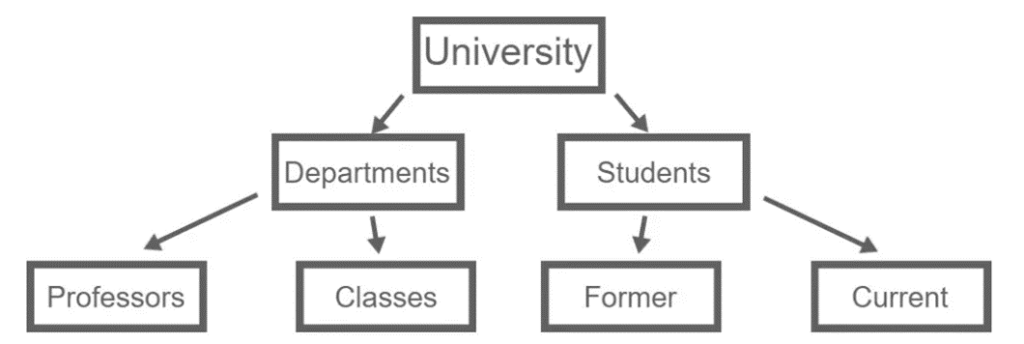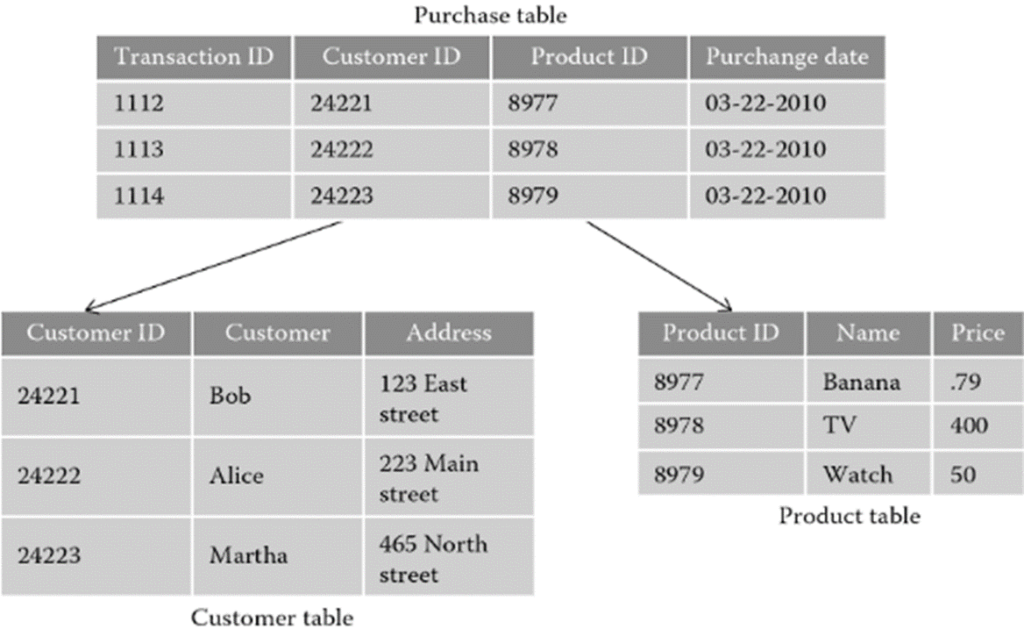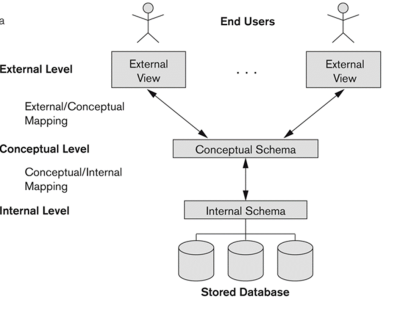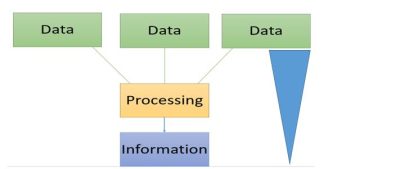A database model refers to the structure of a database and determines how the data within the database can be organized and manipulated
Multiple types of relationships can be supported in database modeling.
•One to one (1-1)
•One to many (1-M)
•Many to One (M-1)
•Many to Many (M-M)
Type of Database Model
- Hierarchical Model
- Network model
- Relational model
- Object oriented Model
Hierarchical Model
It is one of the oldest database model developed by IBM for information Management System.
In Hierarchical Model, data are organized in a tree structure that links a number of different elements to one “Parent” primary record.
The hierarchical database model was popular in the early days of the digital database in the 1950s and 1960s as people transitioned from the paper filing of data.

Advantage:
•Easy addition and deletion of data
•Data at the top of the Hierarchy is very fast to access.
•It worked well with linear data storage mediums such as tapes.
Disadvantage:
•This model support only one to many relationships, many to many relationships are not supported.
•It requires data to be repetitively stored in many different entities.
•Slow to search
•Changes to the model require extensive programming
Network model
The network database model is an extension of hierarchical model.
It was introduced in the late 1960s as a response to the inefficiencies of the hierarchical model. The major inefficiency solved by the network model was the many-to-many relationships that allowed for faster searches.

In the figure , we can see that node student has three parents i.e. Department and Library and Professor . This type of relationship is not possible in the hierarchical model.
Advantage:
•The data access is easier and flexible than the hierarchical model.
Flexible
•Support Many to Many Relationship
•Less Data redundancy than the hierarchical model.
•
Disadvantage:
•The structural changes to the database is very difficult.
•More Expensive than the hierarchical model
•Complex Data Structure
Relational Model
A relational database is developed by E. F. Codd in 1970. The different software systems used to maintain relational databases are known as a relational database management system (RDBMS)
In relational model data is represented using two dimensional table called relations. The two dimensional are row and column, column is also known as field and row is also known as record or tuples . To establish a relationship between two table ; primary key of one tables will be referred into another table as foreign key.
A primary key uniquely defines relationship within a database. Primary key must not repeat.
A Foreign key is a key used to link two tables together. Foreign key is a field that refers to the primary key in another table.

Customer ID is a primary key in customer table.
Product ID is a Primary key in Product table.
Primary key of customer table (Customer ID ) and Product table (Product ID) used as a foreign key in Purchase Table.

Advantages:
•Structured data storage and management with data integrity.
• Powerful querying capabilities using SQL (Easy to access and manage data)
•Support for complex data modeling and relationships.
•Transactional support for data consistency.
•Concurrency control for simultaneous access and updates.
•Data independence, allowing changes to the database structure without affecting applications
•prevent unauthorized access and protect data
Disadvantage:
•Limitations in handling unstructured or semi-structured data.
•Increased complexity in database design and management.
•Need more disk space for program storage then file management system.
•High cost of hardware, software, and staff training
Objective Oriented Model
A database management system in which information is represented in the form of objects as used in object-oriented programming.

Difference between relation and object-oriented database model.

Advantage:
•Object-oriented databases provide us code reusability, real world modelling, and improved reliability and flexibility.
•Object database can handle different types of data while relational data base handles a single data.
Disadvantages
•In comparison to RDBMSs the use of OODBMS is still relatively limited.
•Complexity – Require a deeper understanding of object-oriented programming principles.
•Object-oriented databases can face challenges when it comes to scaling and handling large volumes of data.



